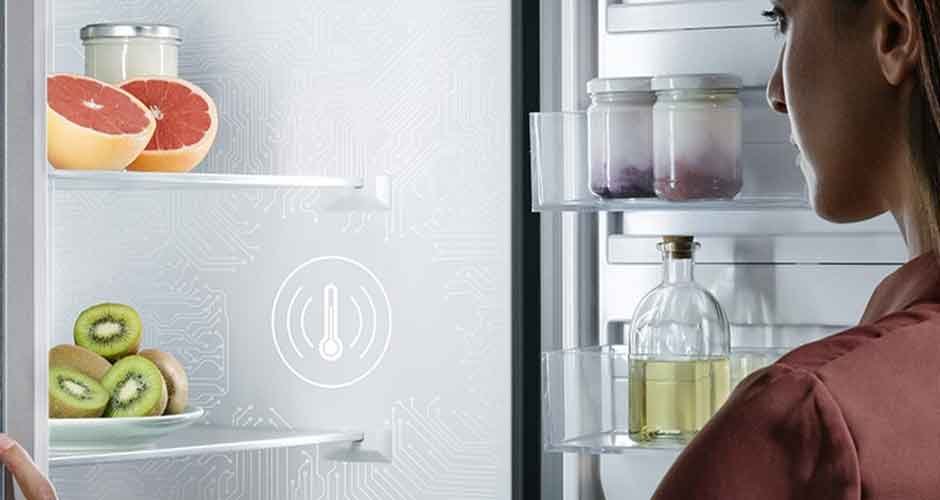Refrigerators are an integral part of our everyday life, ensuring the safety of food and ensuring its freshness. However, even the most modern models need to be repaired and temperature adjusted from time to time. Refrigerator malfunctions can lead to food loss and even affect food safety.
In this article, we’ll take a look at the key aspects of repairing and adjusting the temperature in refrigerators. You’ll learn how to identify problems, fix them yourself, and keep your refrigerator running efficiently. Regardless of whether you have experience in repairing appliances or not, this article will be a useful source of information for anyone who values the reliability and performance of their home appliances.
Refrigerator repair and diagnostics
In modern households, refrigerators play an integral role in preserving food and keeping it fresh. However, sometimes even the most advanced models may require attention and repairs to ensure smooth operation. In this article, we will focus on the repair and diagnosis of refrigerators and the correct selection of refrigerator parts, by looking at the key aspects of identifying and fixing problems to ensure the efficiency of this important household appliance. Learning these aspects will not only save you money on costly service calls, but will also extend the long and reliable life of your refrigerator.
Identify signs of improper temperature:
- Check the temperature in the refrigerator and freezer compartments.
- Carefully observe changes in the state of the food (frozen or softened).
Check the thermostat and sensors:
- Measuring the temperature with a thermometer to check the accuracy of the thermostat.
- Test the temperature sensors to determine if they are working properly.
Replace or adjust the thermostat:
- Determine if the thermostat needs to be replaced or if it can be adjusted.
- Calibrate and set up a new thermostat for accurate temperature control.
Checking and replacing temperature sensors:
- Checking the cables and connections of the sensors to eliminate possible interruptions.
- Replacing defective temperature sensors and adjusting them correctly.
Cleaning of condensers and equipment to improve heat transfer:
- Removing dust and dirt from the surface of the condensers to ensure efficient heat dissipation.
- Check and, if necessary, replace the fans to increase the volume of air flowing through the condensers.
This refrigerator repair plan will help you systematically identify and fix temperature-related problems, ensuring reliable and efficient operation of your appliance.
Adjusting the temperature of the refrigerator
In light of the rapid development of technology, temperature control is becoming an integral element of ensuring the efficiency and functionality of refrigerators. The correct temperature setting in the refrigerator determines the freshness of food and affects its shelf life. In this article, we’ll look at the key aspects of temperature control, pointing out the optimal values for different zones, and provide tips on how to ensure optimal conditions for your refrigerator. Let’s simplify the process so that you can enjoy not only the food in your fridge, but also its efficient and long-lasting performance.
Food cooling zone
- The recommended temperature for storing fresh food is between +2°C and +4°C.
- It is important to maintain a stable temperature to keep food fresh.
Freezer compartment
- Recommended temperature for the freezer: -18°C and below.
- Storing food at low temperatures to maintain its safety and quality.
Proper placement of food in the refrigerator
- Place foods according to the manufacturer’s recommendations to ensure uniformity and cooling efficiency.
- Avoid blocking ventilation openings to ensure proper air exchange.
Periodic maintenance and cleaning of the refrigerator
- Regularly check and, if necessary, clean the vents and condensers.
- Carry out routine maintenance to ensure the cooling system is operating efficiently.
This section will help you set up and maintain the optimal temperature in your refrigerator, ensuring safe food storage and long life of the appliance.
Conclusion
In light of the discussion of refrigerator repair, temperature control, and preventive maintenance, it is important to recognize the importance of systematic maintenance and adjustment of these household appliances. Regular diagnostics and repairs not only keep food in optimal condition, but also help to save energy and extend the life of refrigerators.
It is also important to use the refrigerator correctly, taking into account the manufacturer’s recommendations and creating optimal conditions for its operation. The use of modern technologies that reduce the environmental impact and promote energy efficiency also plays an important role in ensuring the sustainable operation of the refrigerator.
By following the tips on preventive measures and responding to signs of problems in a timely manner, you can not only avoid serious breakdowns, but also maintain the quality and safety of your food. This approach will not only save you time and money, but will also help to maintain the efficiency and longevity of your refrigerator, making it a necessary and reliable part of your household.






